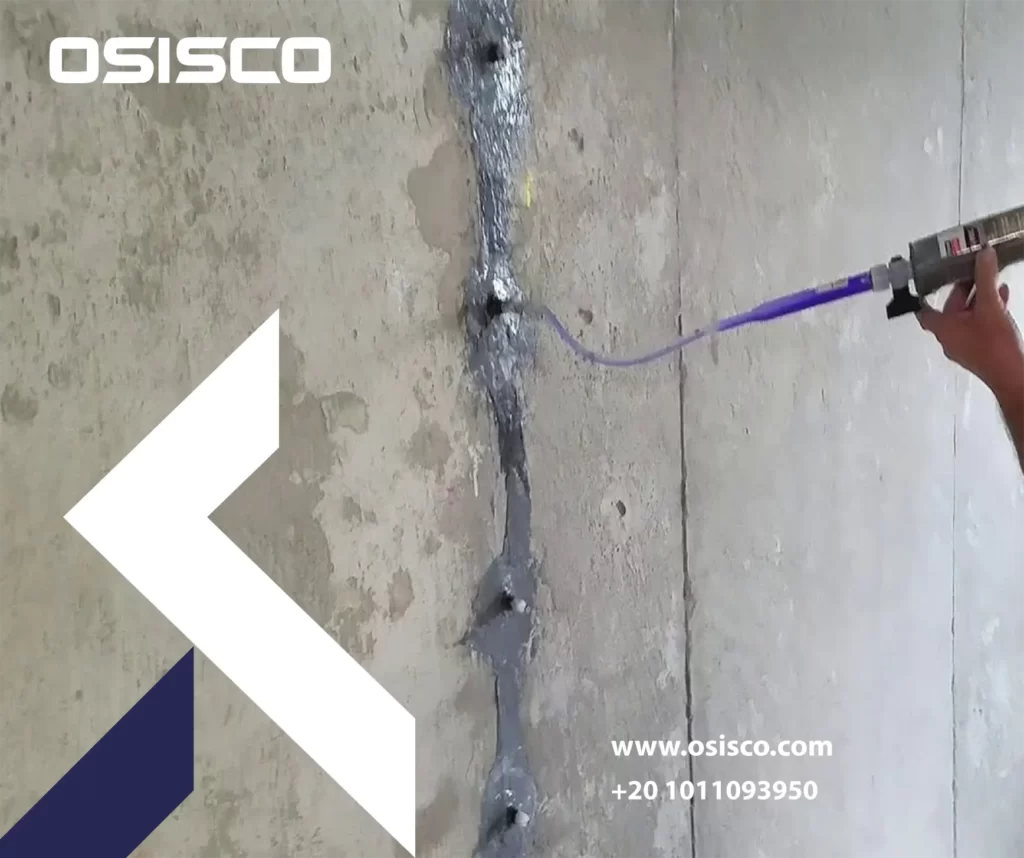
Description
If the structure has any damage, then crack injection is highly recommended for structural repairs.
The method is an easy way to repair cracks in a structure, and it works great for horizontal, vertical, and overhead applications. It can restore the integrity of a structure as well as provide resistance to moisture penetration.

High-pressure injection
High-pressure injection involves inserting a liquid into a very narrow crack (less than 1/32″ or 0.75 cm) at very high pressure. This technique aims to insert the polyurethane injection from the middle of the crack. This gives the assurance that the crack will be infiltrated to its endpoints and from one side to the other.
Low pressure injection
The low-pressure injection method involves inserting a liquid at very low pressure into a narrow crack (more than 1/16″ or 1.5 mm). This technique is mainly appropriate in the case of epoxy injection for non-active cracks, inherent to structures that must retain their architectural features: parking slabs, viaduct pillars, lamp post bases, etc.